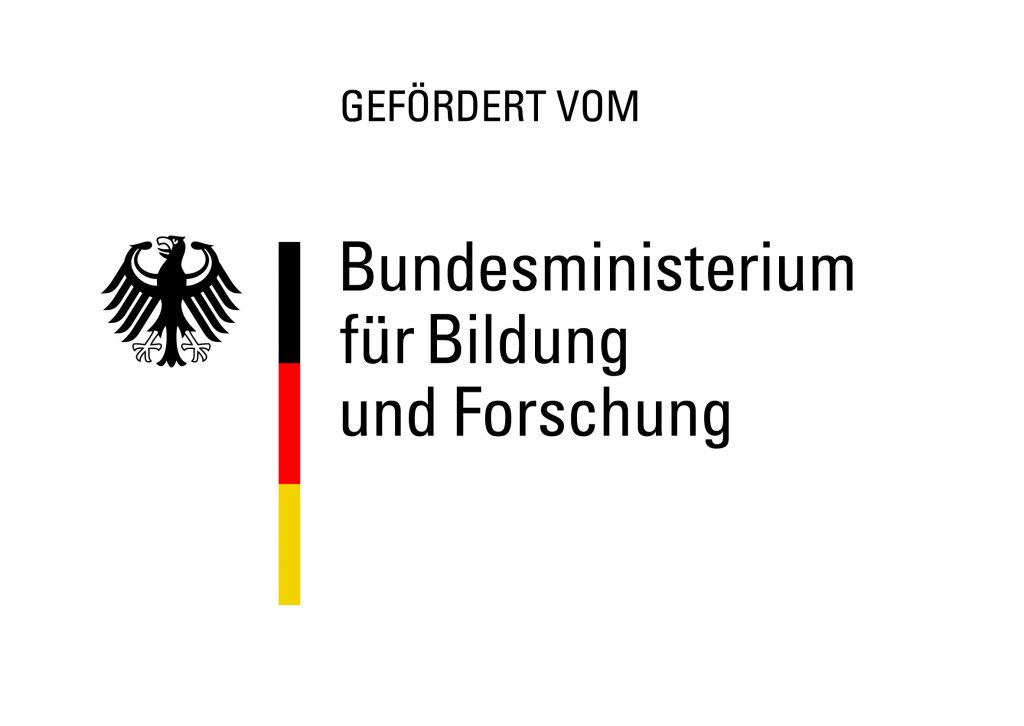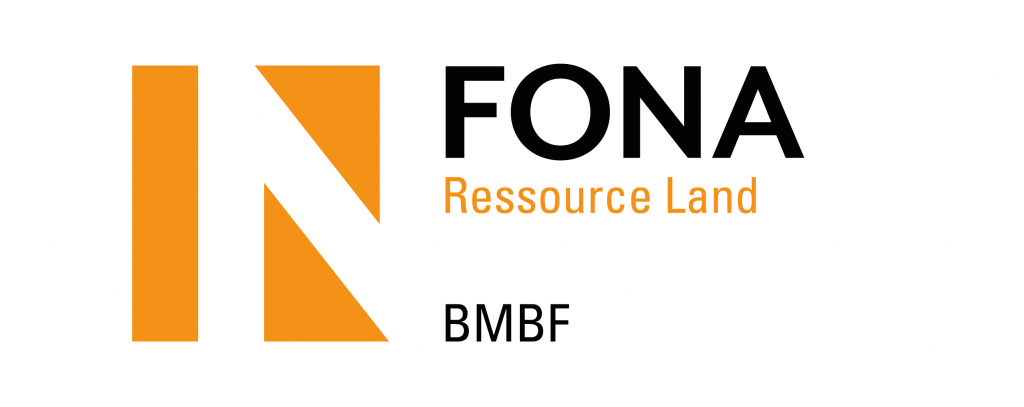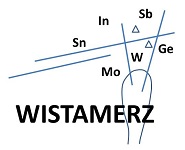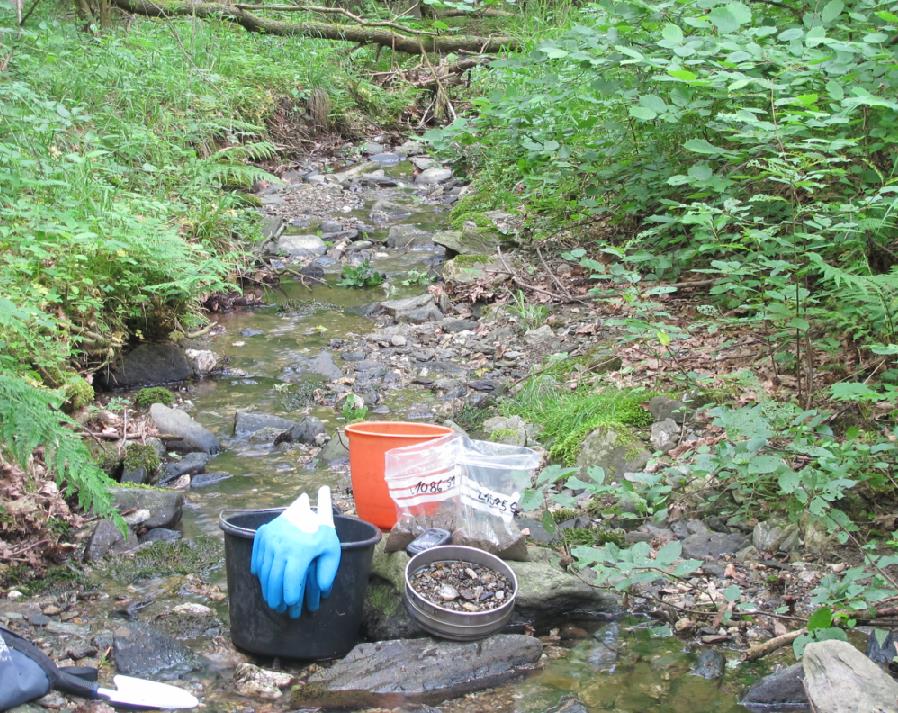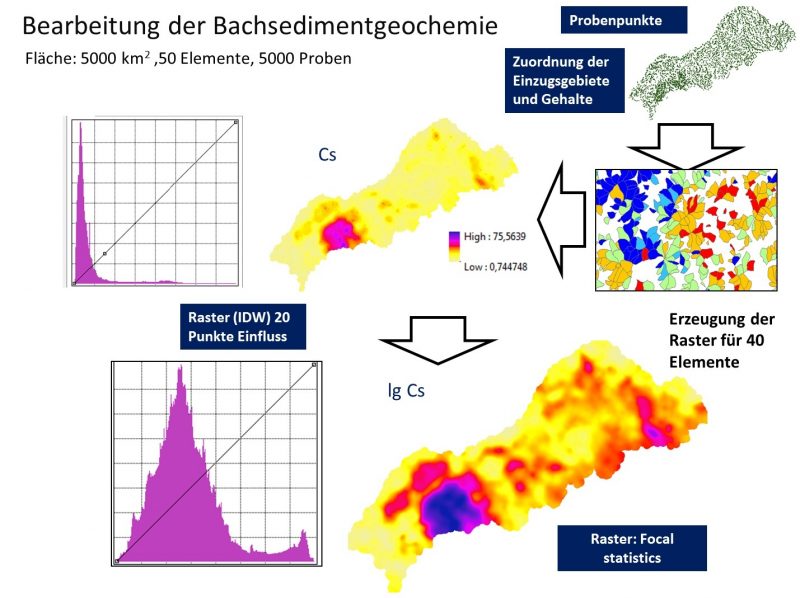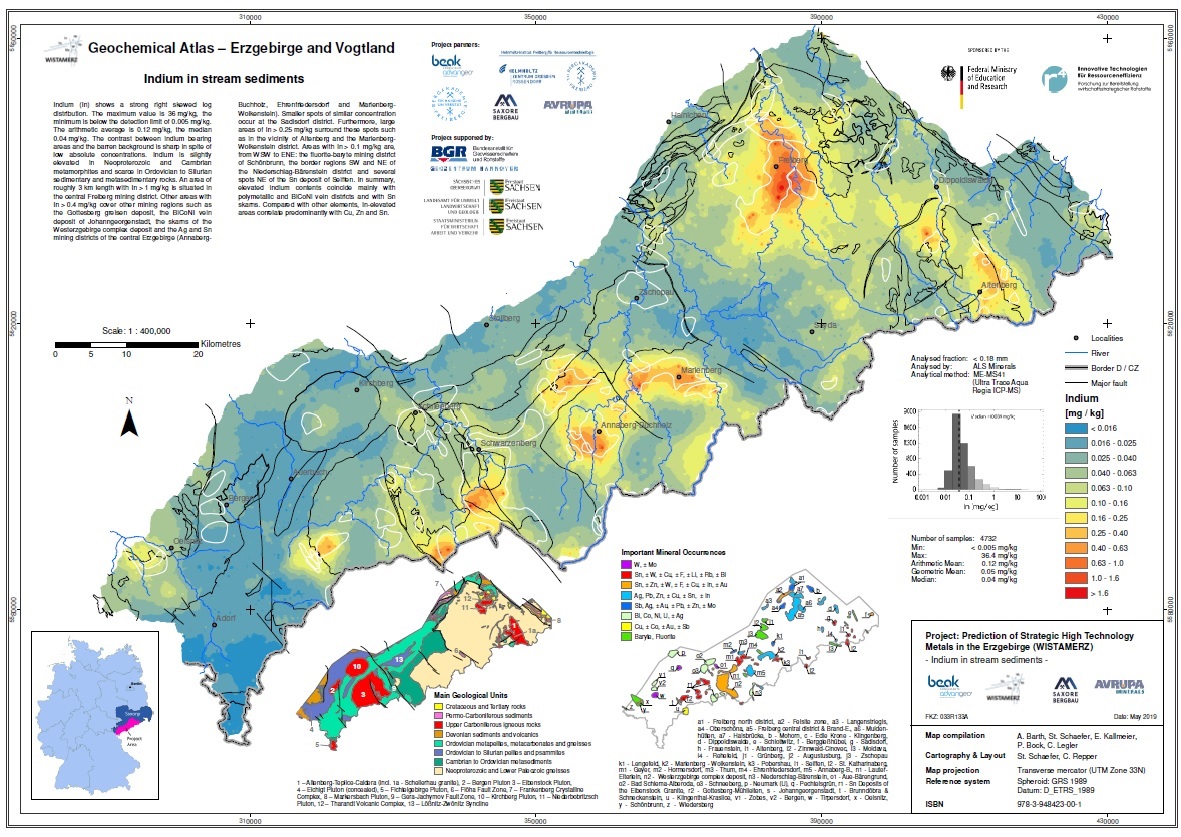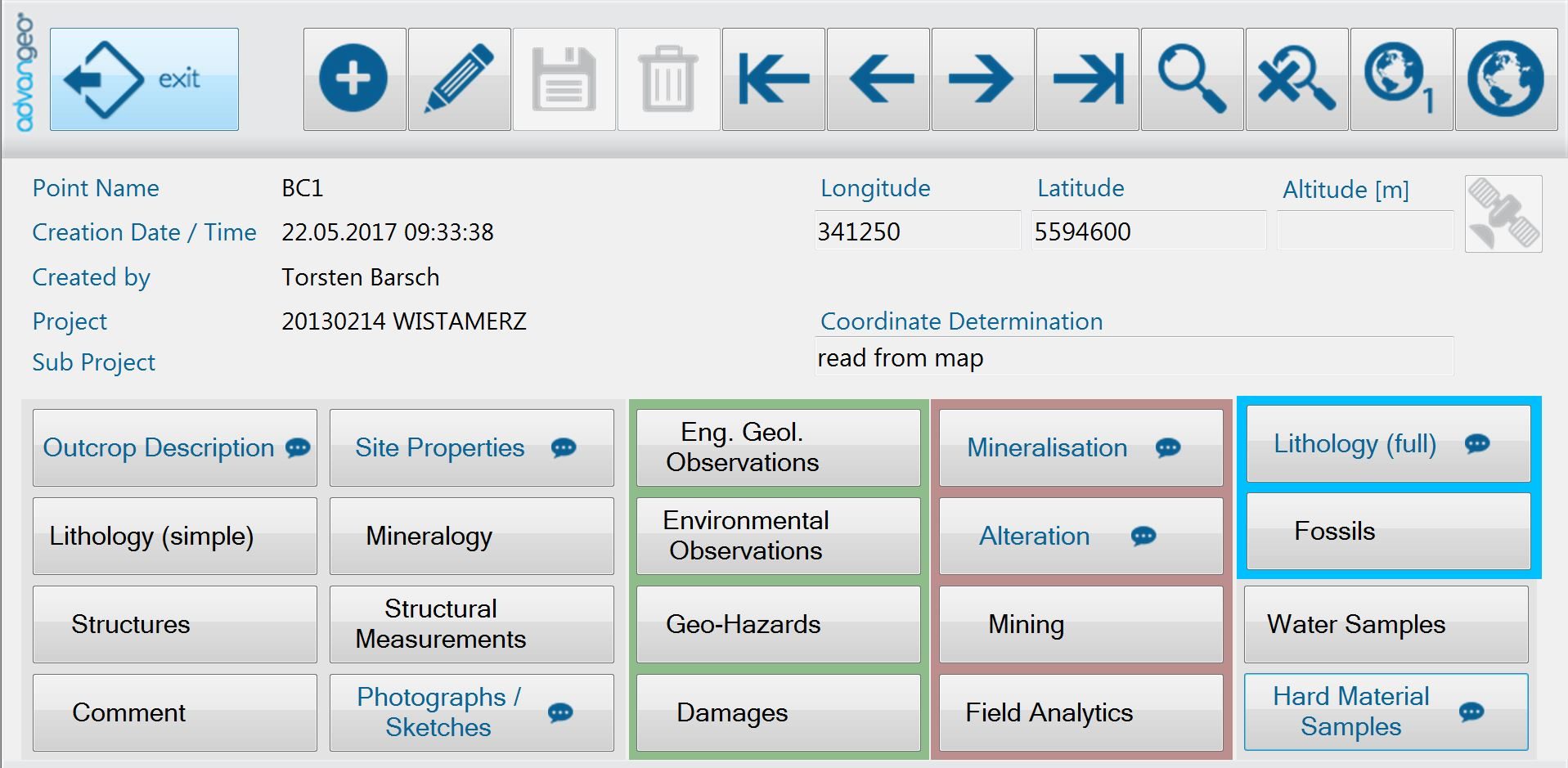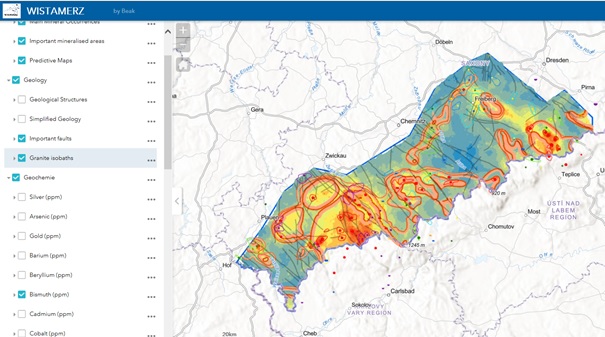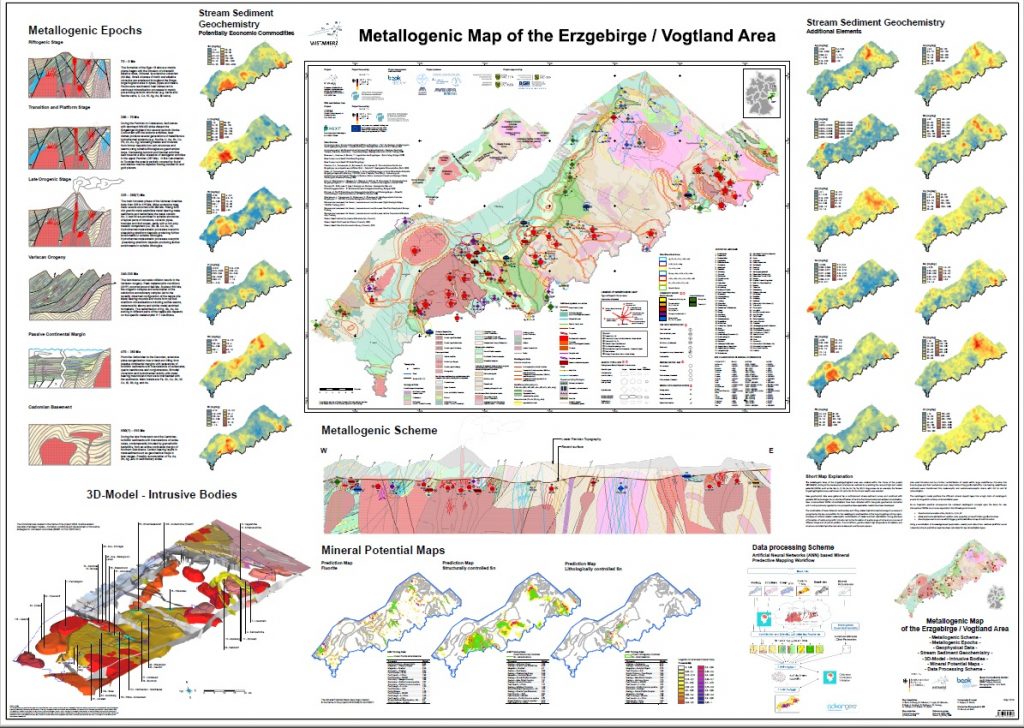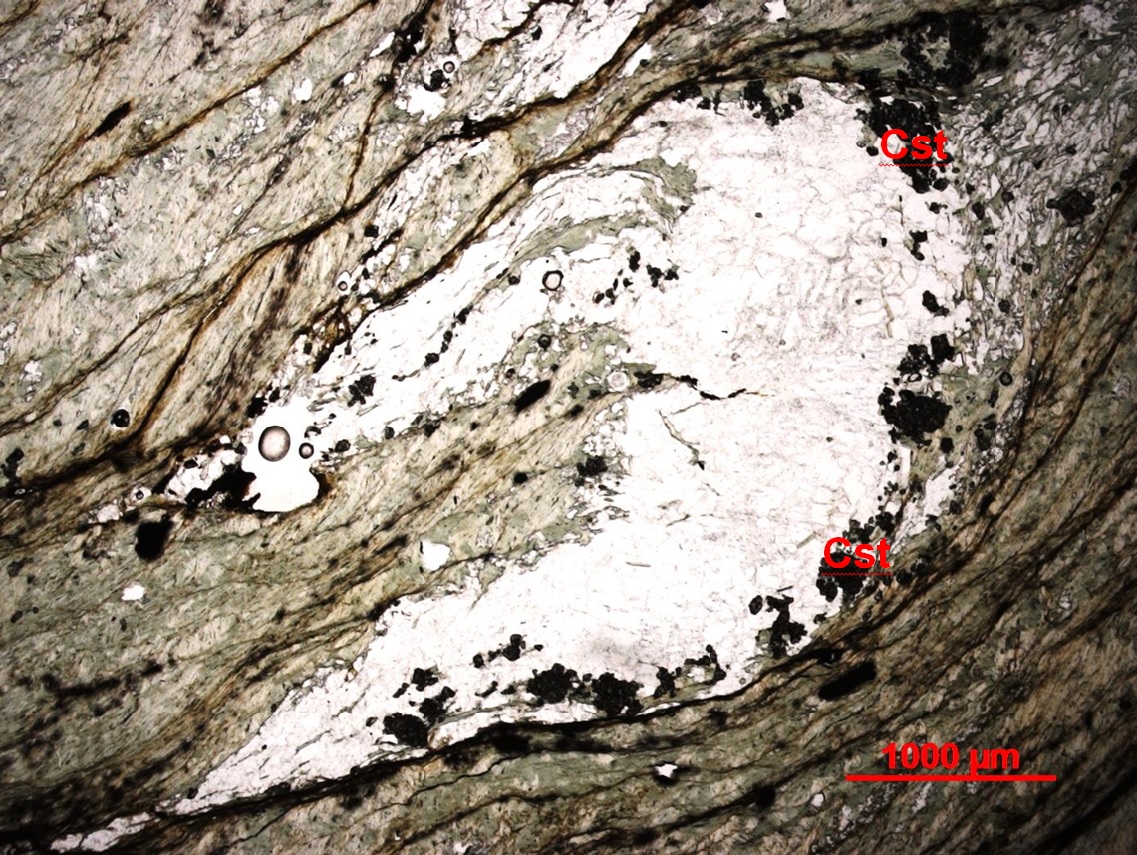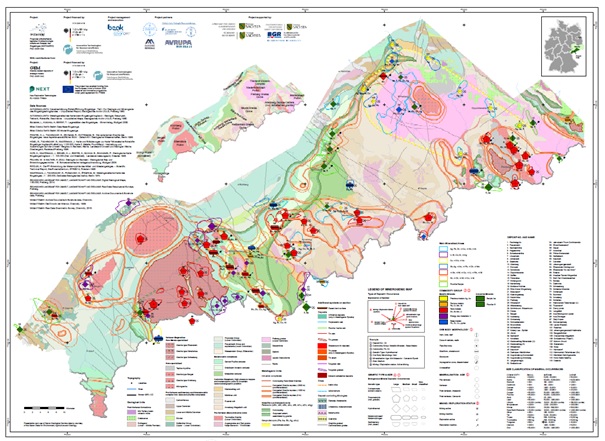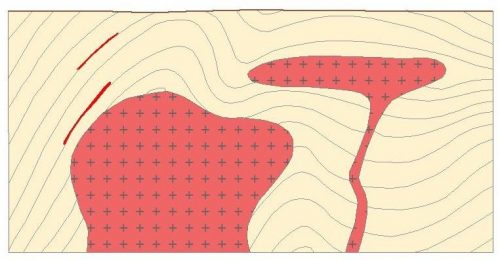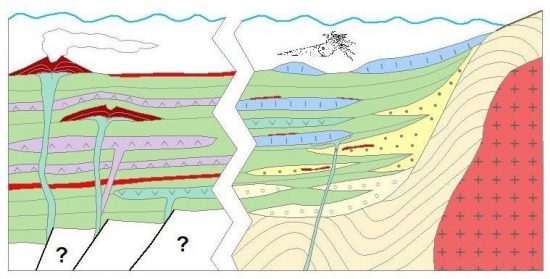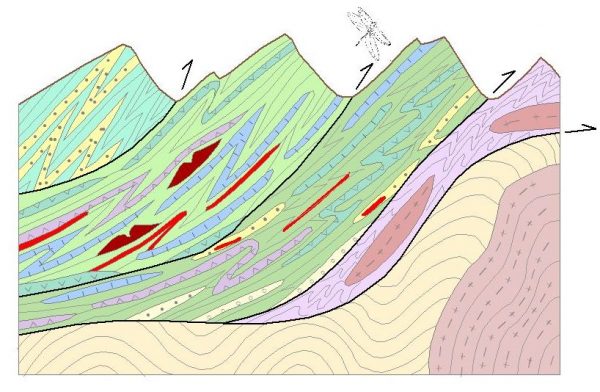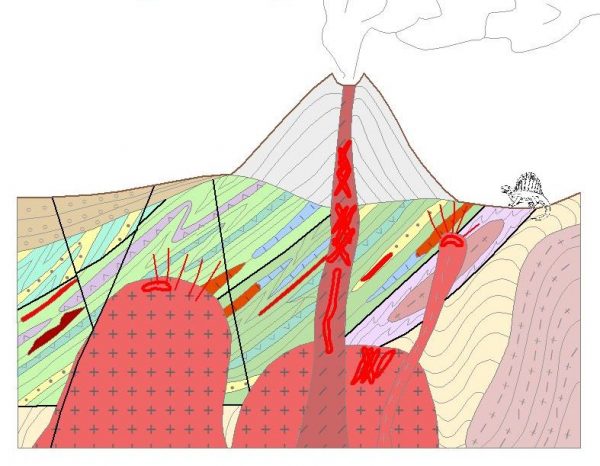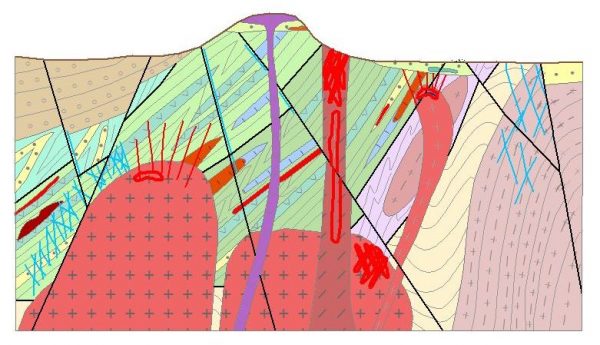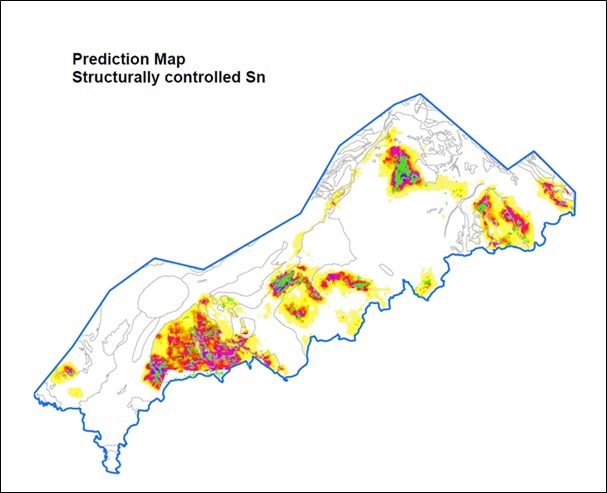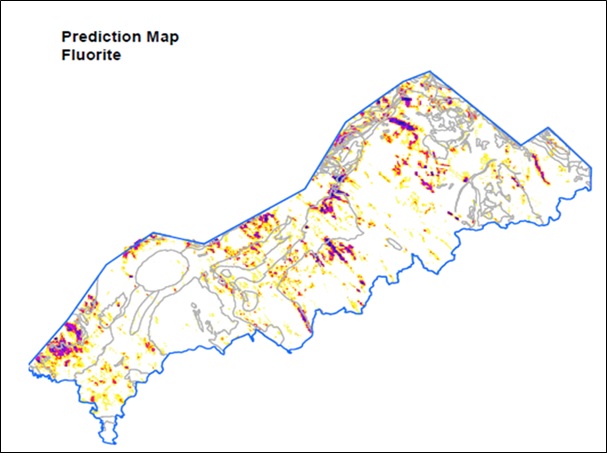| 978-3-982091-60-0
|
Project: Prediction of Strategic High Technology Metals in the Erzgebirge (WISTAMERZ) |
Metallogenic Map of the Erzgebirge/ Vogtland Area |
| 978-3-948423-00-1 |
Project: Prediction of Strategic High Technology Metals in the Erzgebirge (WISTAMERZ) |
– Indium in stream sediments – |
| 978-3-948423-01-8 |
Project: Prediction of Strategic High Technology Metals in the Erzgebirge (WISTAMERZ) |
– Silver in stream sediments – |
| 978-3-948423-02-5 |
Project: Prediction of Strategic High Technology Metals in the Erzgebirge (WISTAMERZ) |
– Arsenic in stream sediments – |
| 978-3-948423-03-2 |
Project: Prediction of Strategic High Technology Metals in the Erzgebirge (WISTAMERZ) |
– Gold in stream sediments – |
| 978-3-948423-04-9 |
Project: Prediction of Strategic High Technology Metals in the Erzgebirge (WISTAMERZ) |
– Tin in stream sediments – |
| 978-3-948423-05-6 |
Project: Prediction of Strategic High Technology Metals in the Erzgebirge (WISTAMERZ) |
– Barium in stream sediments – |
| 978-3-948423-06-3 |
Project: Prediction of Strategic High Technology Metals in the Erzgebirge (WISTAMERZ) |
– Beryllium in stream sediments – |
| 978-3-948423-07-0 |
Project: Prediction of Strategic High Technology Metals in the Erzgebirge (WISTAMERZ) |
– Bismuth in stream sediments – |
| 978-3-948423-08-7 |
Project: Prediction of Strategic High Technology Metals in the Erzgebirge (WISTAMERZ) |
– Cadmium in stream sediments – |
| 978-3-948423-09-4 |
Project: Prediction of Strategic High Technology Metals in the Erzgebirge (WISTAMERZ) |
– Cobalt in stream sediments – |
| 978-3-948423-10-0 |
Project: Prediction of Strategic High Technology Metals in the Erzgebirge (WISTAMERZ) |
– Caesium in stream sediments – |
| 978-3-948423-11-7 |
Project: Prediction of Strategic High Technology Metals in the Erzgebirge (WISTAMERZ) |
– Copper in stream sediments – |
| 978-3-948423-12-4 |
Project: Prediction of Strategic High Technology Metals in the Erzgebirge (WISTAMERZ) |
– Gallium in stream sediments – |
| 978-3-948423-13-1 |
Project: Prediction of Strategic High Technology Metals in the Erzgebirge (WISTAMERZ) |
– Germanium in stream sediments – |
| 978-3-948423-14-8 |
Project: Prediction of Strategic High Technology Metals in the Erzgebirge (WISTAMERZ) |
– Mercury in stream sediments – |
| 978-3-948423-15-5 |
Project: Prediction of Strategic High Technology Metals in the Erzgebirge (WISTAMERZ) |
– Lanthanum in stream sediments – |
| 978-3-948423-16-2 |
Project: Prediction of Strategic High Technology Metals in the Erzgebirge (WISTAMERZ) |
– Lithium in stream sediments – |
| 978-3-948423-17-9 |
Project: Prediction of Strategic High Technology Metals in the Erzgebirge (WISTAMERZ) |
– Tungsten in stream sediments – |
| 978-3-948423-18-6 |
Project: Prediction of Strategic High Technology Metals in the Erzgebirge (WISTAMERZ) |
– Molybdenum in stream sediments – |
| 978-3-948423-19-3 |
Project: Prediction of Strategic High Technology Metals in the Erzgebirge (WISTAMERZ) |
– Niobium in stream sediments – |
| 978-3-948423-20-9 |
Project: Prediction of Strategic High Technology Metals in the Erzgebirge (WISTAMERZ) |
– Nickel in stream sediments – |
| 978-3-948423-21-6 |
Project: Prediction of Strategic High Technology Metals in the Erzgebirge (WISTAMERZ) |
– Lead in stream sediments – |
| 978-3-948423-22-3 |
Project: Prediction of Strategic High Technology Metals in the Erzgebirge (WISTAMERZ) |
– Rubidium in stream sediments – |
| 978-3-948423-23-0 |
Project: Prediction of Strategic High Technology Metals in the Erzgebirge (WISTAMERZ) |
– Antimony in stream sediments – |
| 978-3-948423-24-7 |
Project: Prediction of Strategic High Technology Metals in the Erzgebirge (WISTAMERZ) |
– Selenium in stream sediments – |
| 978-3-948423-25-4 |
Project: Prediction of Strategic High Technology Metals in the Erzgebirge (WISTAMERZ) |
– Tellurium in stream sediments – |
| 978-3-948423-26-1 |
Project: Prediction of Strategic High Technology Metals in the Erzgebirge (WISTAMERZ) |
– Thorium in stream sediments – |
| 978-3-948423-27-8 |
Project: Prediction of Strategic High Technology Metals in the Erzgebirge (WISTAMERZ) |
– Titanium in stream sediments – |
| 978-3-948423-28-5 |
Project: Prediction of Strategic High Technology Metals in the Erzgebirge (WISTAMERZ) |
– Thallium in stream sediments – |
| 978-3-948423-29-2 |
Project: Prediction of Strategic High Technology Metals in the Erzgebirge (WISTAMERZ) |
– Uranium in stream sediments – |
| 978-3-948423-30-8 |
Project: Prediction of Strategic High Technology Metals in the Erzgebirge (WISTAMERZ) |
– Zinc in stream sediments – |
| 978-3-948423-31-5 |
Project: Prediction of Strategic High Technology Metals in the Erzgebirge (WISTAMERZ) |
– Zirconium in stream sediments – |
